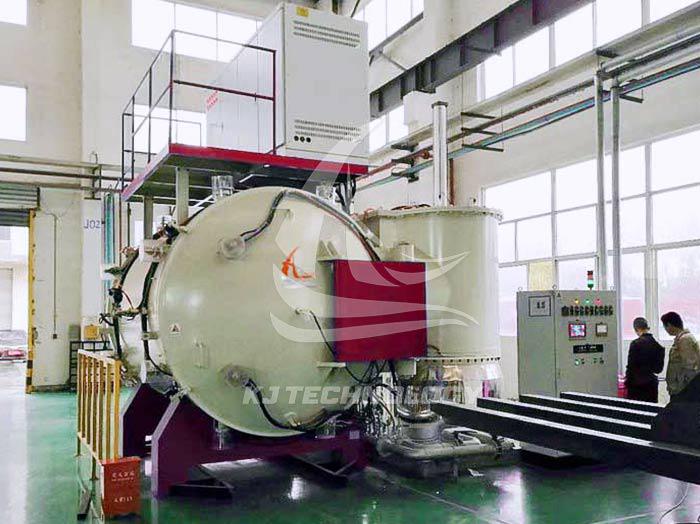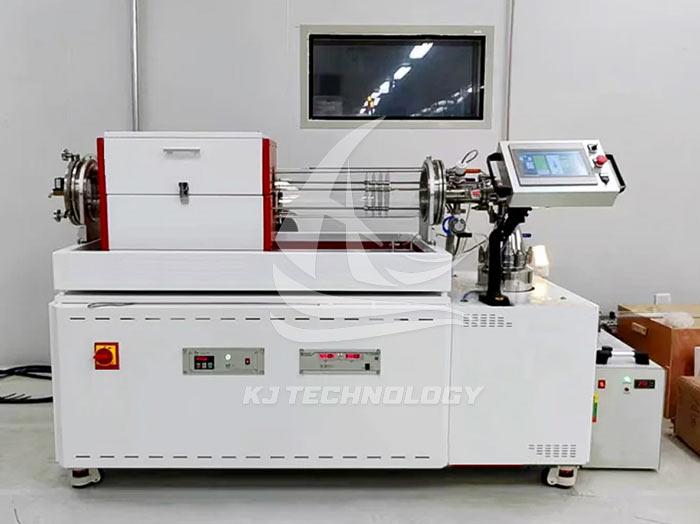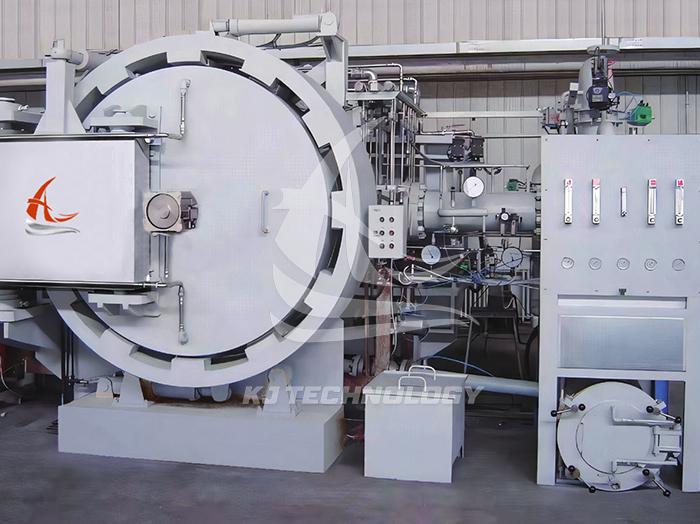What materials can be sintered in an atmosphere vacuum sintering furnace?
 05-29-2025 Author: KJ technology
05-29-2025 Author: KJ technology
The atmosphere vacuum sintering furnace, through the synergistic effect of vacuum environment and atmosphere control, can meet the sintering requirements of various materials for high temperature, oxygen free/inert atmosphere, and is suitable for the preparation of metal materials, ceramic materials, composite materials, functional materials, and special alloys. The following are specific categories and descriptions of materials that can be sintered:
1. Metal materials
High-temperature alloy
Example: Nickel based alloy (Inconel 718), cobalt based alloy (Stellite 6)
Features: Vacuum environment avoids oxidation, inert atmosphere (such as argon) inhibits carbide precipitation, improves high-temperature strength and corrosion resistance.
refractory metal
Example: Tungsten (W), Molybdenum (Mo), Rhenium (Re) and their alloys
Features: Vacuum sintering can remove impurities, refine grains, improve material density and purity, and is suitable for the aerospace and nuclear industries.
hard metal
Example: Tungsten carbide (WC) - cobalt (Co) hard alloy
Features: Vacuum sintering reduces porosity, improves hardness and wear resistance, and is widely used in cutting tools and mold manufacturing.
2. Ceramic materials
Structural ceramics
Example: Aluminum oxide (Al ₂ O ∝), silicon nitride (Si ∝ N ₄), silicon carbide (SiC) ceramics
Features: Vacuum sintering promotes densification, inert atmosphere prevents oxidation, and enhances material strength and high temperature resistance.
Functional ceramics
Example: Piezoelectric ceramics (PZT), ferroelectric ceramics (BaTiO ∝), transparent ceramics (MgAl ₂ O ₄)
Features: Atmosphere control regulates electrical performance, vacuum sintering reduces defects, and enhances functional stability.
3. Composite materials
Metal Matrix Composite Materials (MMC)
Example: Carbon fiber reinforced aluminum (Al), silicon carbide particle reinforced titanium (Ti) alloy
Features: Vacuum sintering avoids interface oxidation, inert atmosphere promotes interface bonding, and enhances material strength and toughness.
Ceramic based composite materials (CMC)
Example: Silicon carbide fiber-reinforced silicon carbide (SiC/SiC) composite material
Features: Vacuum sintering reduces pores, inert atmosphere inhibits fiber degradation, and improves material high temperature resistance and oxidation resistance.
4. Functional materials
magnetic material
Example: NdFeB permanent magnet material, MnZn soft ferrite
Features: Vacuum sintering reduces oxygen content, improves magnetic performance, and inert atmosphere prevents magnetic degradation.
superconducting material
Example: Yttrium Barium Copper Oxide (YBCO) High Temperature Superconducting Material
Features: Vacuum sintering controls oxygen content, increases critical current density, and is applied in superconducting magnets and power transmission.
Optoelectronic materials
Example: Gallium Nitride (GaN) Semiconductor Materials, Perovskite Solar Cell Materials
Features: Atmosphere control regulates crystal structure, vacuum sintering reduces defects, and improves photoelectric conversion efficiency.
5. Special alloys and new materials
shape memory alloy
Example: Nickel titanium alloy (NiTi), copper based shape memory alloy
Features: Vacuum sintering avoids oxidation, inert atmosphere promotes phase transition stability, and enhances shape memory performance.
nanomaterials
Example: nanocrystalline metals, nanoceramics
Features: Vacuum sintering suppresses grain growth, inert atmosphere protects nanostructures, and enhances material activity and performance.
porous material
Example: Porous titanium alloy, porous ceramics
Features: Atmosphere control regulates pore structure, vacuum sintering enhances material strength and biocompatibility, applied in tissue engineering and filtration fields.
6. Key sintering conditions and material matching
Vacuum degree control
High vacuum (≤ 10 ⁻³ Pa): suitable for removing impurities and gases from refractory metals and superconducting materials.
Low vacuum (10 ⁻¹~10 ⁻² Pa): suitable for structural ceramics and metal matrix composites, balancing densification and cost.
Atmosphere selection
Inert atmosphere (argon, nitrogen): prevents oxidation, suitable for hard alloys and magnetic materials.
Reductive atmosphere (hydrogen): Reduces oxides, improves metal purity, suitable for refractory metals such as tungsten and molybdenum.
Carburizing/nitriding atmosphere: regulates surface properties, suitable for tool steel and ceramic cutting tools.
Temperature and Time
High temperature (≥ 1500 ℃): suitable for densification of silicon carbide and silicon nitride ceramics.
Low temperature (≤ 1000 ℃): Suitable for sintering nanomaterials and porous materials to avoid grain growth.
7. Summary
The atmosphere vacuum sintering furnace can meet the high temperature and pure sintering requirements of various materials by removing impurities in a vacuum environment, inhibiting oxidation with an inert atmosphere, and regulating the performance of the atmosphere. Its application fields cover aerospace, electronic packaging, biomedicine, energy storage, etc. Sintering materials include metals, ceramics, composite materials, functional materials, and special alloys. Reasonable selection of sintering conditions (vacuum degree, atmosphere, temperature, time) is the key to improving material properties.








